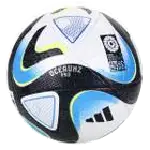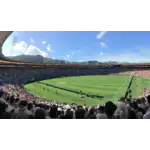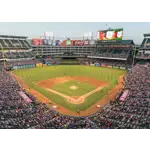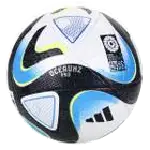Curiosities and Challenges about FIFA Women's Cup
Do you like FIFA Women's Cup?
Would you like to see more curiosities like these..
The FIFA Women's World Cup is an international football tournament held every four years for women's national teams. It....
The 1991 World Cup was planned to be hosted by China and, due to sponsorship by a large American food company, was..
From 1941 to 1979, women's soccer was banned in Brazil due to Decree-Law 3.199/1941, which claimed that it was....
So.. How about a Challenge on the Best Quiz Platform in the World?
Every play is an affirmation of talent and determination
Get to know a little about everything and bet on your knowledge in incredible challenges and duels..
Join the betspot.zone community, accumulate bts (bets) and even compete for prizes..
Discover some interesting facts about FIFA Women's Cup..
selection Quiz - selection Curiosities - selection Challenge - players Quiz - players Curiosities - players Challenge - championship Quiz - championship Curiosities - championship Challenge - - Frequently asked questions about FIFA Women's Cup
Who

Who were the mascots of the Women's Cup over the years: In the first one in 1991, in China, the mascot was a little bird called Ling Ling. The mascot of the 1995 edition in Sweden was a Viking named Fiffi. In the United States in 1999, the mascot was a fox named Nutmeg chosen to represent the speed, intelligence and agility of the players on the field. There was no mascot in 2003 because the competition was to be held in China, but it was hastily moved to the United States due to the SARS epidemic. In 2007 in China, the mascot was a girl named Hua Mulan, inspired by the Chinese legend that became a Disney movie. At Germany2011, a cat named Karla Kick was chosen to be the mascot. An arctic owl named Shuéme was chosen to be the mascot of the 2015 Women's World Cup in Canada. The 2019 mascot was Ettie the chicken. The 2023 World Cup mascot is Tazuni, a penguin with a blue streak of hair.
publicity
Ellen White, England's top scorer

Ellen White, England's top scorer, ended her career at the age of 33. The striker accumulated achievements with Arsenal and Manchester City, standing out as one of the top scorers in the 2019 World Cup, with 52 goals scored for England. Her international debut came in 2010 against Austria, and she took part in her first World Cup the following year. She turned heads with a magnificent cover goal against Japan in the group stage and was also part of the squad at the London Olympics. While playing for Arsenal, she won the Women's Super League twice, along with two FA Cup titles and three League Cup titles.
At the 2015 Women's World Cup

At the 2015 Women's World Cup, the United States beat Japan in the final 5-2, winning their third world title. Carli Lloyd scored three goals in 16 minutes and Lauren Holiday also contributed to the 4-0 lead. Although Japan scored twice, the USA sealed the victory with a Tobin Heath goal. With that victory, the United States became the team with the most titles in the history of the Women's World Cup, joining the triumphs of 1991 and 1999.
The Women's World Cup had its first edition in 1991

The Women's World Cup had its first edition in 1991, with Brazil participating among the 12 teams. Despite a victory over Japan, the team finished in 9th place after losing to the United States and Sweden. Over the following editions, Brazil had memorable moments, such as second place in 2007, but also faced challenges, such as elimination in the round of 16 in recent tournaments. Brazilian women's football continues to evolve, leaving a significant impact on the sport.
publicity
Nettie J

Nettie J. Honeyball, a brave woman from London, formed the British Ladies Football Club in 1894, making it the first women's football team in history. Despite the difficulties and challenges of the time, 30 women responded to her ad and began to train with determination. The presence of Lady Florence Dixie as President further strengthened the team. This pioneering team marked a historic moment in the fight for gender equality in sport, inspiring future generations of players and advocates for equality in women's football.
Brazil debuted in the 2023 women's football world cup agains

Brazil debuted in the 2023 women's football world cup against Panama on 24 July. The highlight was Ary Borges, who scored a hat-trick (3 goals in the match). Bia also scored, thus completing a 4x0 rout. Queen Marta, who started on the bench, entered the second half, played a good game and brightened up even more the great debut match of the Brazilian team..
On June 25, 2020, after a virtual vote

On June 25, 2020, after a virtual vote, it was decided that the 2023 FIFA Women's World Cup will take place in Australia and New Zealand between July 20 and August 20. It will be the ninth edition of the tournament and the first time that the format will be played in two countries at the same time. Furthermore, this edition marks the expansion to 32 participants in a professional football competition held in these two countries.
publicity
Hindmarsh Stadium is a football stadium located in Adelaide

Hindmarsh Stadium is a football stadium located in Adelaide, Australia. With capacity for around 18,000 people, it is the smallest of the stadiums that will host the Women's World Cup games. It will be the venue for Brazil's debut, on July 24, against Panama. In addition, the stadium will also host group and round of 16 matches.
The Perth Oval is a stadium located in Perth, Australia

The Perth Oval is a stadium located in Perth, Australia. Inaugurated in 1910 and renovated in 2004 to adopt a rectangular format, the stadium currently has a capacity of 20,500 people. During the Women's World Cup, Perth Oval will host group stage games.
Melbourne Rectangular Stadium, also known as AAMI Park

Melbourne Rectangular Stadium, also known as AAMI Park, is located in the city center of Melbourne, Australia. With capacity for 30,000 people, the stadium opened in March 2010 and is mainly used for rugby matches. During the Women's World Cup, the stadium will host the game between Brazil and Jamaica, for the last round of the group stage, on August 2, in addition to other group stage games and the round of 16.
publicity
Lang Park, also known as Suncorp Stadium

Lang Park, also known as Suncorp Stadium, is located in Brisbane, Australia. With capacity for around 52,000 people, it is the largest stadium in the city. It will be the stage for the game between Brazil and France, for the second round of the tournament, on July 29, during the World Cup. In addition, the stadium will host other matches in the group stage, round of 16, quarter-finals and the competition for third place.
Forsyth Barr Stadium, also known as Dunedin Stadium

Forsyth Barr Stadium, also known as Dunedin Stadium, is a stadium located in Dunedin, New Zealand. Inaugurated in August 2011, it has capacity for 30,748 people. The highlight of this stadium is the fact that it is the only one in the world that is fully covered, with a fixed roof, and has natural grass. In the 2023 World Cup, the stadium will host group stage games. In addition, Forsyth Barr Stadium is used primarily for rugby and national championship football matches.
Wellington Regional Stadium, also known as Sky Stadium

Wellington Regional Stadium, also known as Sky Stadium, is a stadium located in the capital of New Zealand, Wellington. Opened on January 3, 2000, it replaced the old Athletic Park. With capacity for 34,500 people, it is the second largest stadium in the country, second only to Eden Park. In addition to rugby, cricket and football matches, the stadium hosted the Rugby World Cup in 2011. In the Women's World Cup, it will host matches up to the quarterfinals.
publicity
Sydney Football Stadium, better known as Allianz Stadium

Sydney Football Stadium, better known as Allianz Stadium, is a stadium located in the Moore Park neighborhood of Sydney, Australia. This modern structure has a capacity for 42,500 people. Inaugurated in 2002, this venue was renovated in August 2022. Renowned for its Rugby matches, the Sydney Football Stadium will host the 2027 Rugby World Cup, as well as being the sub-venue for some football matches of the Summer Olympics de 2032. For the XXI FIFA World Cup, the stadium will host group and round of 16 matches.
The Eden Park Stadium, located in Auckland, New Zealand

The Eden Park Stadium, located in Auckland, New Zealand, is the stage chosen for the start of the Cup and has a capacity for 50,000 fans. Built in 1900, it is traditional in the region and is mainly used for rugby and cricket, sports that are characteristic of New Zealand. Throughout the Cup, it will host the games of the group stages, round of 16, quarterfinals and also the semifinal. The opening game will be between New Zealand and Norway.
FIFA decided to increase the number of participating teams f

FIFA decided to increase the number of participating teams from 24 to 32 in the women's tournament, to match the format of the men's tournament. The tournament will have eight groups with four teams each. In the end, the top two teams in each group will advance to the Round of 16. This decision was taken due to the increase in the level of games recorded in the two previous editions.
publicity
FIFA requires that, for the Women's World Cup

FIFA requires that, for the Women's World Cup, the number of countries be between 8 and 12, in the same way as with the men's competition. So, 13 stadiums distributed in two countries will be used for the games, 5 in each one, and 64 matches will be held - 32 in each country. At the moment, New Zealand has confirmed 5 sub-hosts, one of them being Eden Park Stadium, which will host the opening match, one of the semifinals, in addition to one of the round of 16, one of the quarterfinals and the final, which will take place at the Olympic Stadium in Sydney, Australia.
On June 19, 2020

On June 19, 2020, CONMEBOL and Colombia sent a letter to FIFA accusing the entity of bias in assessing the country's conditions to host the 2023 Women's World Cup. and New Zealand achieved 4.1, and Japan 3.9. The letter highlighted the quality of Colombian hospitals and found it offensive to suggest that critically ill patients would need to be transferred to another country. On 25 June 2020, the Australia-New Zealand bid was selected as the host of the tournament, receiving the most votes from UEFA, CONMEBOL, OFC, CONCACAF, AFC and CAF entities (excluding England).
FIFA has officially released the tournament ball

FIFA has officially released the tournament ball. Created by Aboriginal artist Chern'ee Sutton and Maori artist Fiona Collins, Oceaunz was inspired by the landscapes of Australia and New Zealand. A video was released, showing a giant version of the ball flying over the Sydney sky in a helicopter. The design is based on New Zealand's mountains and Australia's connection to the Indian Ocean. The name of the ball, which contains the acronyms AU and NZ, honors the countries in Oceania that are hosting the tournament.
publicity
Four Brazilian referees

Four Brazilian referees were selected by FIFA to participate in the World Cup: Edina Alves was designated to be the main referee, having worked at the Tokyo Olympic Games, held in 2021. Neuza Back and Leila Moreira da Cruz will be field assistants, with responsibility to use the VAR (video recording) falling to Daiane Muniz dos Santos. They are part of a total of 33 female referees and 55 field assistants, 19 of whom are professionals responsible for video refereeing, where 13 are men and women representing for the first time in a World Cup.
From 1941 to 1979

From 1941 to 1979, women's soccer was banned in Brazil due to Decree-Law 3.199/1941, which claimed that it was incompatible with the nature of women. In 1983, however, the practice was regulated and recognized in Deliberation CND nº 01/83, with considerable female interest in the country.
The 1991 World Cup was planned to be hosted by China and

The 1991 World Cup was planned to be hosted by China and, due to sponsorship by a large American food company, was named the M&Ms Cup. This situation led to a small interesting detail: with the delegations not being able to adapt to the local food, they started to adopt a diet made with the chocolates offered by the sponsor.
publicity
The FIFA Women's World Cup

The FIFA Women's World Cup is an international football tournament held every four years for women's national teams. It started in 1991, with 12 participating teams. The United States won the first edition. Over the years, the competition has grown in popularity and size, with more teams participating. The United States stood out as the most successful team, winning it four times. Other notable teams include Germany and Norway. Players like Marta, Birgit Prinz and Mia Hamm also stood out in the tournament. The 2019 Women's World Cup in France was a huge success. The next edition will be in 2023, in Australia and New Zealand, with 32 participating teams. The competition has been important in boosting women's football and giving players visibility around the world.
Back
